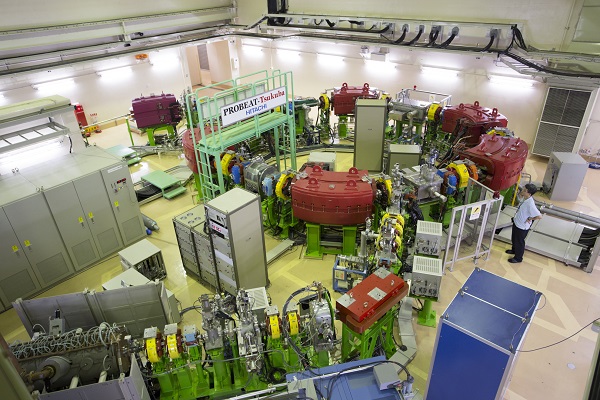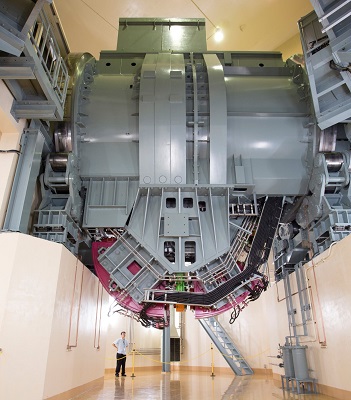
The future of proton therapy is realized at Tsukuba.
There are 18 proton beam therapy facilities in Japan (as of April 2020). The Proton Medical Research Center’s current facility started treatment in 1983, and in 2001 it began operations as the first such facility attached to a university hospital in Japan. It has the most experience and achievements in the country.
Based on our position as a university hospital, we have established a cooperative system not only for treatment and human resource development, but also for the further development of treatment equipment in order to contribute to the future advancement of proton beam therapy.
For example, the respiratory-gating system, which was developed to enable moving organs to be irradiated in the same position every time, is a breakthrough technology created at the University of Tsukuba. It is now the standard system around the world.
The proton beam therapy equipment operated at Texas State University MD Anderson Cancer Center in the USA, one of the world’s leading research and treatment facilities in the field of oncology, was created through joint research with Hitachi, Ltd., based on the University of Tsukuba’s equipment. In addition, some spot scanning methods, which are regarded as state-of-the-art technologies in the field of proton beam therapy equipment, have been researched and put into practical use at the University of Tsukuba.
The University of Tsukuba has been conducting various research projects, not only for the advancement of its own equipment, but also for the development of proton beam therapy equipment around the world.
Therapy equipment created through collaboration between the fields of medical science and physics.
Producing a proton beam for use in proton therapy requires the use of massive equipment composed of various components.
The following images provide rare glimpses of the proton-beam equipment.
LINAC
The LINAC is the first component to accelerate the protons. The protons accelerated by the LINAC go into a type of accelerator known as a "synchrotron."

Synchrotron
The synchrotron further accelerates the protons on a circle orbit up to 60% of light speed. The synchrotron is about 7 m in diameter. When protons are acelerated to such a spped, they can reach more than 30 cm deep in human body. A proton beam at such a prticle speed can therefore be used for treating patients with larger bodies.

Rotating Gantry
The rotating gantry is a drum-shaped apparatus which is 10 m high and weighs 200 tons.
It contains an emission port and is connected to the proton therapy treatment room.
Rotating the gantry rotates the emission port 360 degrees around the treatmentbed.
Our center is equipped with 2 such gantries.
Accelerator Control Room
The accelerator control room constantly monitors the equipment czdescribed here to ensure that the protons they create are stably supplied.
The respiratory-gating system -pioneerd by the University of Tsukuba- ensures that the proton beam accurately targets the tumor.
As a person breathes, their diaphragm moves up and down 3 to 4 cm, moving the liver and lungs up and down.
The University of Tuskuba has developed a method known as respiratory-gating which ensures that the proton beam equipment is not affected by such movement and targets the same point every time. A laser sensor placed on the abdomen of the patient senses the movement of the body and a proton beam is emitted only when it is in the correct position.